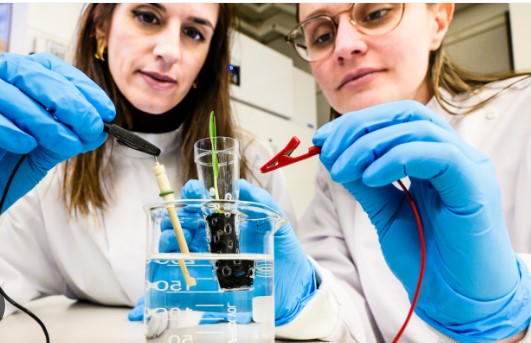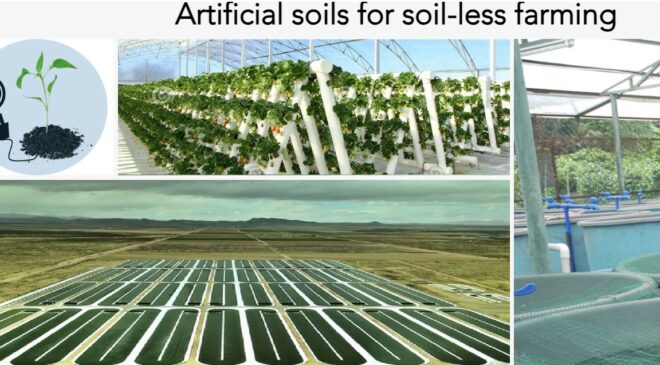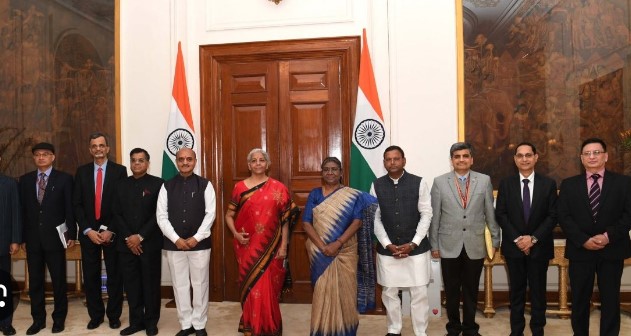
Esoil Revolutionizing Urban Agriculture: Linköping University’s Breakthrough Study on eSoil and Hydroponics for Sustainable Food Security1
Table of Contents
ToggleEsoil Revolutionizing Urban Agriculture
Linköping University’s groundbreaking research on ‘electronic soil’ (eSoil) and hydroponics offers a ray of hope for sustainable urban agriculture and food security amidst growing challenges. The study, led by Eleni Stavrinidou, an associate professor in the Laboratory of Organic Electronics, introduces an innovative approach to soilless gardening, utilizing the electrically conductive substrate known as electronic soil’.
What is eSoil?
According to the study,electronic soil serves as a low-power bioelectronic growth substrate in hydroponic environments. It can electrically stimulate plant root systems and growth environments, presenting an environmentally friendly alternative derived from cellulose and the conductive polymer PEDOT. Notably, electronic soil’ minimizes resource consumption and provides a safe, low-energy option compared to previous high-voltage methods using non-biodegradable materials. Its active material is identified as an organic mixed-ionic electronic conductor.
How does eSoil work?
The study showcases significant progress, demonstrating a 50% growth increase in barley seedlings’ roots when electrically stimulated for 15 days using electronic soil. This advancement promotes more efficient and sustainable development, expanding the range of crops suitable for hydroponic cultivation. Hydroponics, a soilless growth method, relies on water, nutrients, and a substrate, enabling precise nutrient delivery through water recirculation—a process unattainable in traditional farming.
Hydroponics also facilitates vertical farming in towering structures, conserving space. Barley seedlings, traditionally not grown hydroponically, exhibit improved growth rates with electrical stimulation. While the exact mechanisms are not fully understood, the study suggests enhanced nitrogen processing. Eleni Stavrinidou emphasizes the potential for faster seedling growth with fewer resources, laying the groundwork for continued investigation into the biological processes involved.
Benefits of eSoil
Linköping University’s research signifies a substantial stride in urban agriculture, addressing global challenges posed by a growing population and climate change. Combined with hydroponics’ advantages, such as vertical farming’s space efficiency, eSoil emerges as a sustainable solution to global food demands. Professor Eleni Stavrinidou underscores the potential for hydroponics to thrive in urban envi

ronments, offering controlled settings to meet food demands.
While hydroponics alone may not solve global food security, it proves particularly valuable in areas with limited arable land and challenging environmental conditions. The study anticipates new avenues for research and development, shedding light on the potential of hydroponics in urban environments and fostering ongoing exploration and progress in sustainable agriculture.
Future Prospects and Implications
Linköping University’s groundbreaking study not only showcases the immediate benefits of electronic soil and hydroponics but also opens up exciting possibilities for the future of agriculture. The successful integration of electronic soil in hydroponics not only enhances growth rates but also highlights the potential for optimizing nutrient processing in plants.
As urbanization accelerates and available arable land diminishes, the combination of hydroponics and eSoil offers a viable solution to the increasing demand for food in densely populated urban areas. Vertical farming, made possible by hydroponics, allows for efficient space utilization, potentially revolutionizing urban agriculture.
The research also points towards the importance of sustainable practices in agriculture, addressing environmental concerns associated with traditional farming methods. By minimizing resource consumption and providing a low-energy alternative, eSoil contributes to a more eco-friendly approach to food production.
A Catalyst for Further Research
Professor Eleni Stavrinidou’s optimism about the study’s potential impact on further hydroponic cultivation research is well-founded. The positive outcomes observed with barley seedlings lay the groundwork for exploring the applicability of eSoil across a broader range of crops. Understanding the mechanisms behind the electrical stimulation’s effects on plant growth could unlock new avenues for optimizing agricultural practices.

Moreover, the study prompts considerations about the scalability of hydroponics and eSoil in addressing global food challenges. While it may not be a panacea for all agricultural issues, the combination of these technologies provides a promising piece of the puzzle. Ongoing research and collaboration between scientists, agronomists, and policymakers will be essential to fully harness the potential of eSoil and hydroponics.
In conclusion, Linköping University’s study on eSoil and hydroponics represents a pivotal moment in the pursuit of sustainable and efficient urban agriculture. The successful implementation of eSoil in hydroponic systems, coupled with the demonstrated benefits in plant growth, positions this research as a catalyst for positive change in the agricultural landscape. As the world grapples with the complexities of food security and environmental sustainability, innovative approaches like eSoil and hydroponics offer a glimmer of hope and a pathway to a more resilient and sustainable future.
For the latest updates-click here.


